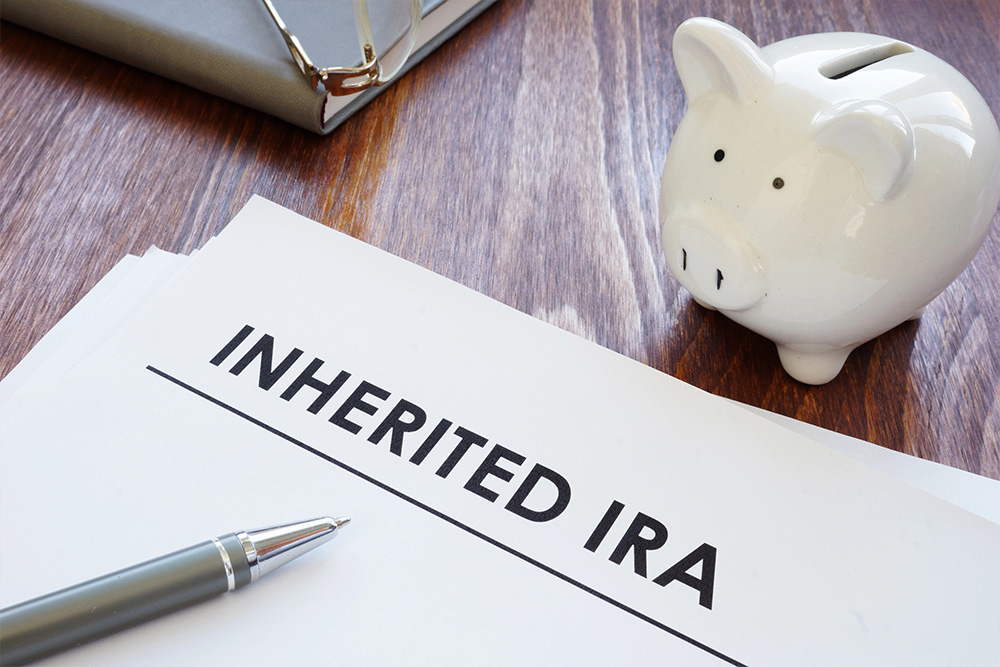Inheriting an Individual Retirement Account (IRA) comes with a host of rules that can be challenging to navigate. One of the most important is the inherited IRA 10-year rule, introduced by the SECURE Act in 2019. This rule dictates how and when the beneficiary must take distributions from the inherited account.
The new regulations aim to simplify the process, but understanding how they work is crucial for beneficiaries to avoid costly mistakes.
Understanding the Inherited IRA 10-Year Rule
The inherited IRA 10-year rule impacts non-spouse beneficiaries who inherit an IRA after January 1, 2020. This rule mandates that all assets in the IRA must be withdrawn within 10 years of the original owner’s passing. The primary difference from previous regulations is that the beneficiary no longer needs to take annual required minimum distributions (RMDs) based on life expectancy. Instead, they have a decade to empty the account, which can be advantageous for tax planning.
In addition, the 10-year rule eliminates the flexibility beneficiaries once had under the life expectancy method. Before the SECURE Act, a beneficiary could take smaller RMDs each year, allowing the account to continue growing tax-deferred. Now, however, the entire balance must be withdrawn within the 10-year timeframe, triggering income tax on the funds when withdrawn. This can significantly affect how the beneficiary’s tax liability is managed over time.
Who Does the 10-Year Rule Apply To?
The 10-year rule applies to beneficiaries who inherit an IRA on or after January 1, 2020. However, the rule comes with several exceptions. The following groups are not subject to the 10-year rule:
- Spouses of the deceased IRA holder: Spouses can roll the inherited IRA into their own or elect to treat it as an inherited IRA, but they are not bound by the 10-year rule.
- Minor children of the deceased: If the beneficiary is a minor, the 10-year rule does not apply until they reach the age of majority.
- Disabled or chronically ill beneficiaries: Those with disabilities or chronic illnesses, as defined by the IRS, are exempt from the 10-year rule.
- Individuals not more than 10 years younger than the IRA holder: In this case, the 10-year rule is not applicable.
How Does the 10-Year Rule Work for Spouses?
When a spouse inherits an IRA, they have multiple options. They can roll the inherited IRA into their own account, treat it as an inherited IRA, or even withdraw the funds as needed. The main advantage for spouses is flexibility, particularly in terms of managing RMDs. A spouse can wait until they reach the age for required minimum distributions or take distributions as they see fit.
For example, if a spouse inherits an IRA and is under the age of 59 ½, they might want to treat it as an inherited IRA rather than a personal account. This allows them to take distributions without facing the typical 10% penalty for early withdrawal.
The Impact of the 10-Year Rule on Non-Spouses
Non-spouse beneficiaries face different rules under the 10-year guideline. Once they inherit the IRA, they must withdraw the entire balance within 10 years. There are no annual RMD requirements, but the beneficiary must ensure that the entire balance is taken out by the end of the 10-year period. This creates an opportunity to plan for tax efficiency, as the distribution can be timed in a way that minimizes the overall tax burden.
However, since all distributions from an inherited IRA are subject to income tax, careful planning is needed. For example, withdrawing large sums early in the 10-year period might lead to higher taxable income in those years, pushing the beneficiary into a higher tax bracket.
Key Factors to Consider in the 10-Year Rule
The 10-year rule’s implementation isn’t as straightforward as it might appear. Beneficiaries need to factor in several aspects before making withdrawals:
- Tax implications: Withdrawals from a traditional inherited IRA are subject to income tax, which means planning the timing of the distributions is essential. Stretching out the withdrawals over time may allow the beneficiary to avoid being taxed at a higher rate in a single year.
- Beneficiary’s age: If the beneficiary is younger, they may want to stretch out the withdrawals to minimize the impact on their taxes. Conversely, older beneficiaries may prefer to withdraw funds more quickly, especially if they are already in a higher tax bracket.
- Roth IRA considerations: If the inherited IRA is a Roth IRA, there will be no income tax on the withdrawals, but the 10-year rule still applies. It’s essential to balance the tax-free nature of Roth IRAs with the required 10-year distribution timeline.
How to Optimize the 10-Year Rule
There are strategies that can help beneficiaries optimize the inherited IRA 10-year rule:
- Lump sum distributions: Some beneficiaries might choose to take a lump sum distribution at the end of the 10-year period. While this can lead to a large tax bill in a single year, it can also give the beneficiary more control over how the funds are distributed.
- Taking withdrawals gradually: For others, it may make sense to spread the withdrawals over the entire 10-year period. By doing so, beneficiaries can minimize their annual tax liability by staying in a lower tax bracket.
- Consider charitable giving: Charitably inclined individuals can name a charitable remainder trust as the beneficiary of the inherited IRA. This trust can stretch out the distribution period beyond 10 years, offering tax benefits and fulfilling charitable goals.
Exceptions to the 10-Year Rule
While most beneficiaries are subject to the 10-year rule, there are important exceptions. As mentioned earlier, surviving spouses and certain other groups, including disabled beneficiaries, are exempt. For minor children, the 10-year rule applies once they reach the age of majority. In these cases, the flexibility to wait for distributions might be beneficial, allowing time for proper planning and minimizing the impact on taxes.
Need Help Navigating the Inherited IRA 10-Year Rule? Let Us Help You
At Nevada Trust Company, we understand how complicated the inherited IRA 10-year rule can be. Our experienced team specializes in estate planning, asset protection, and tax-efficient strategies to help you make the best decisions for your financial future. If you are uncertain about how to handle an inherited IRA, our professionals are here to guide you.
Reach out to us today to see how we can assist in safeguarding your assets and achieving your financial goals. Learn more about our self-directed IRAs or explore our Nevada asset protection trust.





